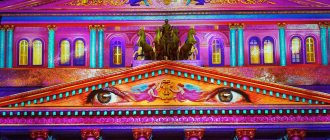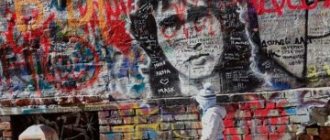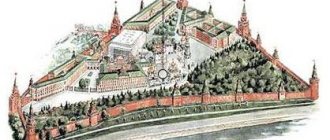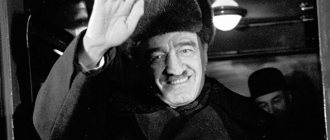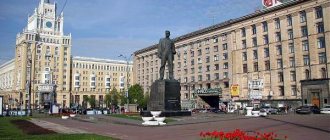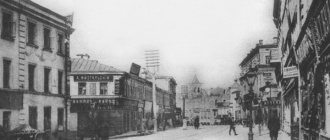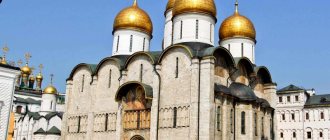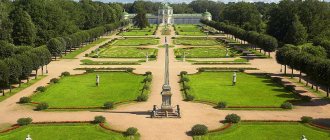The Bolshoi Theater is one of the largest theaters in Russia and the most famous theater in Moscow, which has become a cultural symbol of the city. Being one of the main attractions of the capital, the Bolshoi Theater has won the love of the public not only for its achievements in opera and ballet, but also as an important architectural object that shapes the appearance of the city.
In fact, few of the tourists visiting the city have been inside the Bolshoi Theater, but almost everyone has seen it from the outside: the view of Teatralnaya Square with the theater building is one of the classic “postcard” views of Moscow.
The modern building of the Bolshoi Theater was built in 1853-1856 according to the design of the architect Albert Kavos in the style of classicism with an eye to the previous one, which burned down, designed by the architects Osip Bove and Andrei Mikhailov. In 2005-2011, the building was reconstructed, preserving the main and side facades.
The main facade of the building with a gable roof is symmetrical and has a laconic but rich appearance: the lower tier is decorated with pilasters and rustication, above on the left and right there are bas-reliefs depicting ancient actors and musicians (almost identical, but differing in small details), the pediment is decorated with a double-headed eagle surrounded by two griffins. In front there is a massive eight-column portico, the pediment of which is decorated with bas-relief images of muses - patrons of art - with a lyre. The portico is crowned by the famous bronze quadriga of Apollo (patron of the arts and leader of the muses) by Pyotr Klodt, which is depicted large on the 100-ruble banknote and has become one of the symbols of Moscow. Also, bas-relief images of muses with a lyre can be found in the frieze ornament, and behind the colonnade on the facade there are 2 sculptures of muses (with a lyre and a tympanum) and 7 bas-relief masks depicting emotions, surrounded by putti. The rear façade was extensively rebuilt and modernized between 2005 and 2011 and shows a mixture of styles.
Along the sides of the building there are graceful cast-iron galleries with lanterns.
Milestones in the development of the theater
March 17, 1776 is the date the theater was founded. At this time, the owner of a private troupe, provincial prosecutor Prince Pyotr Vasilyevich Urusov , received the highest permission of Catherine II to direct entertainment events in the capital.
The performances of Prince Urusov's talented group often delighted the Empress, and with her permission, the prince erected a wooden theater building, nicknamed Petrovsky, on the banks of the Neglinka, on the corner of Petrovka Street. Before it could open, the theater burned down.
The Russified Englishman Meddox, a successful entrepreneur and ballet dancer, helped the prince build the new building. The three-story brick theater building cost the Briton 130 thousand silver rubles.
The building, which stood for 25 years, burned down on October 8, 1805 . Architect Karl Ivanovich Rossi designed the new theater, and during its construction, Theater Square, which had previously been untravelable due to mud and potholes, was leveled and paved. The wooden theater could not be saved during the fires in Moscow in 1812.
The theater, which arose in 1825 on the site of charred ruins, amazed and delighted its contemporaries. The magnificent huge building was combined with the talent and popularity of the artists. According to sad tradition, another fire on March 11, 1853 left only the stone outer walls.
This time the building took 3 years to restore. The work was led by architect Albert Kavos. Contemporaries wrote that the appearance of the building “captivated the eye with the proportionality of the parts, in which lightness was combined with grandeur.” This is how it has survived to this day.
A brief history of the construction of the Bolshoi Theater, as well as Theater Square itself
Teatralnaya Square, known to everyone today, appeared in Moscow in 1821-1825. It was designed by Osip Bove. The plan of the square has been preserved to this day. In the center stood the Bolshoi Theater, and on either side of it were four buildings with symmetrical facades. The Metropol and the former Moscow Hotel were built on the site of two of four identical buildings. The same applies to the RAMT building (the former building of the Poltoratsky Trading Rows). The facade of the Maly Theater, and the building itself, has been preserved from the time of Beauvais! This is exactly what all four buildings on the square looked like, and looking at the facade of the Maly Theater, we can easily imagine what Theater Square was like in the mid-19th century.
Theater Square designed by O. Bove
The building of the Bolshoi Theater, designed and built by Osip Bove in 1825, has not survived. At that time, the theater was called Petrovsky, since its very first building faced Petrovka Street with its facade. The Maly Theater building was rebuilt from the house of the merchant Vargin in 1824; the troupe of the Petrovsky Theater performed there. After the completion of the central and largest building of the square, they began to distinguish between the large Petrovsky and small Petrovsky theaters. There was only one troupe, there was an underground passage between the buildings, even the scenery for the performances was alone and stored in a common warehouse. The epithets “big” and “small” were written with a small letter.
This is what the theater built by Osip Bove looked like in 1825
In 1856, according to the design of Albert Kavos, the Bolshoi Theater building, which has survived to this day, was built to replace the one that burned down three years earlier. Kavos even partially preserved the Beauvais façade: viewers are greeted by a monumental 8-column portico. Kavos was considered one of the best theater architects of his time. The theaters he built had the best acoustics. By the way, the famous Mariinsky Theater in St. Petersburg was also built by Kavos.
According to the architect, “the hall is a kind of violin, in which the floors, walls, and ceiling act as the wooden soundboards of an instrument to conduct sound.” To decorate the Bolshoi, only special resonant spruce was used, from which musical instruments are made. During Soviet times, the floor was filled with concrete and the acoustics deteriorated. It’s hard to believe, but even the fabrics of the furniture upholstery and walls had a special composition and impregnation that did not interfere with the acoustic properties of the hall.
Fortunately, during the restoration, specialists were able to restore not only the historical interiors, but also the unique acoustics of the Bolshoi Theater.
Theater built by Albert Kavos
The theater opened on August 20, 1856. The architect, having rebuilt the building, increased the height of the walls by 2 meters, creating the main facade in large, expressive and laconic forms of classicism.
Architecture and façade features
The building looks solemn: perfect symmetry, an eight-column white stone portico , a sculptural composition by Peter Klodt: a chariot with four harnessed horses galloping across the sky, and Apollo driving them. The only decoration of the main facade is a square rustication and a ribbon of ornamental frieze under the cornice as the embodiment of the theatrical architecture of classicism.
An additional pediment was erected above the main portico, covering the decoration hall. On the pediment was the state emblem of Russia - a plaster double-headed eagle. Sculptural decorations were added to the external decoration, and decorative niches were built in. The walls were covered with rustication, the entrances in front of the entrance were equipped with a ramp for carriages to enter. The facade is painted sand color. The impressiveness of the structure is emphasized by the spacious Theater Square.
Auditorium
Albert Kavos paid great attention to the auditorium, creating it with six tiers for 2,300 spectators. The plan of the hall is similar to a violin, tapering towards the orchestra's location. To create good acoustics in the hall, the architect came up with many unusual solutions: he changed the curvature of the walls and made the ceiling flatter.
The panels were covered with resonant spruce, from which musical instruments are made. The portal arch of the stage was increased to the width of the hall, acoustic cavities were installed, and the orchestra pit was deepened and expanded. The stucco molding is made of papier-mâché, which enhances sound.
The interior of the hall is an elegant combination of the Renaissance and Byzantine style : a combination of white, gold and bright crimson colors. The decoration of the hall is a majestic crystal chandelier created in France especially for the Bolshoi Theater. Around the chandelier there is an elegant painting “Apollo and the Muses”.
In the center of the foyer is the entrance to the imperial box with a double-headed eagle, located opposite the stage. Above the door of the box, which is supported by Atlanteans made of papier-mâché, flaunts the monogram of the last Emperor Nicholas II.
Reconstruction of the Bolshoi Theater
Soon the building required major repairs, which were carried out under Soviet rule: the foundation was strengthened, electricity and telephone were installed.
Regular reconstruction
Reconstructions in the theater were carried out constantly, the last of them was completed in 2011, and the theater began to grow in depth: as a result, a new concert hall was located under Theater Square. In the niches of the main façade are statues of the muses Erato and Terpsichore, recreated from photographs. The theater was restored to its historical appearance of facades and interiors, improving its technical condition.
The building was placed on a new foundation, the main façade was repainted sand-gold and extended by 6 meters. The area of the Bolshoi Theater, having doubled, is 80 thousand square meters. 17 elevators appeared in the theater building , 4 of them are technical.
Foyer and halls
In the main foyer, which was called White before the reconstruction, the paintings with imitation of stucco decoration were restored. The painting is done using the grisaille technique, so that visually the pattern appears three-dimensional. Three crystal chandeliers illuminate the foyer.
Mirrors installed here create a feeling of additional space and light. A specially commissioned white grand piano sits in the middle of the foyer. The luxurious Grand Staircase leading to the foyer is decorated with stunning alabaster vases.
The Bolshoi Theater is not only a stage and an auditorium, but also luxurious halls. On both sides of the main foyer are the Imperial foyers , the Exposition and Choir halls. The round hall, or the Small Imperial Foyer, with a square-shaped hall and a ceiling in the form of a rotunda, which gave the hall its name, is distinguished by amazing acoustics.
Standing in the center of the room and talking, you can hear your own voice reflected from the walls. In the silence of the hall, you will hear the words of those present speaking in a whisper. Here the emperor, standing in the center of the circle, made a speech that was heard in every corner of the hall.
The Grand Imperial Foyer, which received its name in 1895 on the occasion of the coronation of Nicholas II here, was updated by hand restoring every centimeter of jacquard fabrics and tapestries and restoring the symbolism of the late 19th century. The ceiling was decorated with stucco and gilding, and the imperial monograms and the image of crowns were returned to their original places.
In the interior of the Choir Hall, ornamental paintings using the grisaille technique and acoustic panels on the walls were restored. The royal box shines with gold and velvet. The interior of the theater with an area of 981 square meters was gilded by 156 craftsmen from all over Russia to a thickness of 5 microns, using 4.5 kg of gold.
Bolshoi Theater stage
The stage of the Bolshoi Theater, which has the volume of a 6-story building, has been updated and computerized. Now it consists of 7 two-level lifting and lowering platforms and can be horizontal, inclined or stepped. Stage portal 20.5*17.8*23.5.
The stage space is equipped with modern devices for lighting, special effects and acoustics. Under the proscenium there is space for an orchestra for 130 people. In 1955, a luxurious brocade curtain appeared on the theater stage, which decorated the stage for 50 years, restored during the reconstruction of the theater. On the new curtain there is embroidery of a double-headed eagle and the words “Russia”.
Auditoriums
3 auditoriums are open to the public: the historical (main) stage, the new stage and the Beethoven Hall. The historical stage is a semicircular hall with 4 tiers, decorated with gold and red velvet. The soundproof concert hall seats 1,768 people.
Above the audience's heads is a chandelier with 26,000 crystals , gilded crystal pendants weighing 200 kg, which appeared in the theater in 1863 and illuminates the hall with 120 lamps. A two-ton chandelier with a diameter of 6 and a height of 9 meters is washed by electricians once a year, lowered down. At first it was spark plug, then oil, gas, and from the end of the 19th century electric.
The stucco design of the balconies is not repeated on any of the tiers of the auditorium. The ceiling of the auditorium “Apollo and the Muses” does not raise any objections among the strictest experts. The bright crimson draperies of the boxes strewn with gold, plaster arabesques and a picturesque ceiling give the auditorium the appearance of a fairy-tale palace.
The new stage was built in 2002 and is located in a separate building, next to the main one, at the address: Bolshaya Dimitrovka Street, building 4. On November 29, 2002, it opened with the premiere of Rimsky-Korsakov’s opera “The Snow Maiden”. Tours of foreign and Russian theaters take place here, and the Golden Mask theater festival is held.
A beautiful, comfortable, festive hall with a spacious 24*24 stage. Chandeliers and sconces create coziness. The lampshade and curtain were painted in Tsereteli's workshop. Spacious foyers, cloakrooms and buffets provide relaxation.
The underground concert and rehearsal hall , located under the fountain on Teatralnaya Square, is a hall with a complex multi-level structure and design using the latest engineering technology. The technological systems installed here are used on ocean liners.
“Folding cup” is the name of the technologically advanced, modern concert hall. Soundproof moving walls, glass partitions, rows of seats and a stage area - everything can disappear, rise, or fall, or level off.
The rearrangement in the hall is controlled by a stationary remote control: lowering or raising the levels of the rooms is necessary for listening to opera performances with an orchestra and choir without using the main stage.
The interior of the hall is in the style of Louis XV: walls upholstered in silk, majestic crystal chandeliers, Italian stucco molding and walnut floors delight the audience. Chamber and solo concerts are held here, as well as concerts and performances for children.
Historical scene
The historical stage of the Bolshoi Theater , decorative elements of the hall, as well as a magnificent chandelier and lampshade.
The chandelier consists of 24 thousand crystal elements, about half of which are original - left over from 1856! Initially, the chandelier was candle, then oil, gas and at the end of the 19th century it became electric. The chandelier is washed by electricians once a year, lowering it down. It is worth noting that the weight of the product is 2 tons.
Creative life of the Bolshoi Theater
The modern Bolshoi Theater includes opera and ballet troupes, a stage and brass band and the Bolshoi Theater Orchestra. During the revolution and the Civil War, the Bolshoi troupe was completely preserved. During this time, the public saw 170 opera and ballet performances. In 1919, the theater was awarded the title “Academic”.
In 1937 and 1976 the theater was awarded the Order of Lenin. During the Great Patriotic War, the theater, evacuated to Kuibyshev, created new performances, and artists went to the front with concerts. The theater staff contributed money to the Defense Fund and received gratitude from Stalin.
At the beginning of the 20th century, the theater's repertoire included the best world works and outstanding Russian operas. Chaliapin and Sobinov, Gryzunov and Savransky, Nezhdanova, Balanovskaya and Azerskaya shine with their talent on stage. Artists Vasnetsov, Korovin, Golovin are working on the decorations.
On the stage of the Bolshoi Theater there were 800 performances, premieres of operas by Rachmaninov and Prokofiev, Arensky and Tchaikovsky. The ballet troupe is a welcome guest in any country.
The title of Hero of Socialist Labor was awarded to I. Arkhipova, Yu. Grigorovich, I. Kozlovsky, E. Nesterenko, E. Svetlanov, G. Ulanova, M. Plisetskaya, M. Semenova. 80 theater artists received the title of People's Artist of the USSR during the Soviet period.
Every spring, tulips bloom in front of the theater building: “Galina Ulanova” - deep pink and “Bolshoi Theater” - bright red, which were bred by the Dutch breeder Lefeber. A florist who attended Ulanova’s performance and admired the ballerina’s talent, especially in honor of her and the theater on whose stage she shines, developed new varieties of tulips.
After reconstruction in 2011, the oldest theater in Moscow shone with all its colors. In July 2021, the theater launched a series of street broadcasts of its performances. An all-weather screen was installed on the main facade of the theater .
In March 2021, the Bolshoi Theater began a series of online broadcasts of previously recorded performances. Since 2009, the Bolshoi Theater has been running a Youth Opera Program, whose participants train for 2 years and participate in the theater’s performances.
From Bolshoy Petrovsky to Bolshoi Imperial
Construction of the next theater building began in 1820. The project became one of the most ambitious among the capital's architectural designs of the 19th century. Eyewitnesses enthusiastically told how beautiful the new theater was with majestic columns, a strict portico and Apollo's Chariot, which later became the symbol of the Bolshoi Theater.
The square in front of the new building was named Teatralnaya. The new theater became the Bolshoi Petrovsky, and later simply the Bolshoi. The magnificent opening took place at the very beginning of 1825 and was accompanied by opera and ballet performances. The building met the latest technologies necessary for the modern temple of Melpomene:
- The auditorium, huge at that time, could accommodate 2 thousand people;
- the theater has provided seating areas;
- for the convenience of spectators, numerous passage galleries and stairs were built;
- the orchestra pit was located below the stage;
- the floor in the auditorium had the ability to rise to the level of the proscenium, forming a single whole with it.
By the middle of the century, the theater began to give preference not to dramatic performances, but to opera and ballet productions. Spectators were able to see works by famous composers. The capital premiere of “Ruslan and Lyudmila” took place on the Bolshoi Petrovsky stage. But the “fairy tale” did not last long, only three decades: another fire destroyed not only the props, but also the building. It was restored in just three years, timing the opening to coincide with the coronation of Tsar Alexander II.
The new theater featured excellent acoustics, updated interiors and larger areas. Royal boxes appeared here, and the auditorium appeared in a luxurious crimson-gold design. The vertical front curtain depicted scenes related to the life of Moscow. Additionally, a curtain was installed for intermissions.
But inner splendor did not replace the most important thing - a reliable foundation. Like most buildings in the area, the Bolshoi Theater was built on stilts. They rotted and shrunk. At the end of the 19th century, several repairs were carried out, which only temporarily stopped the process of destruction.

